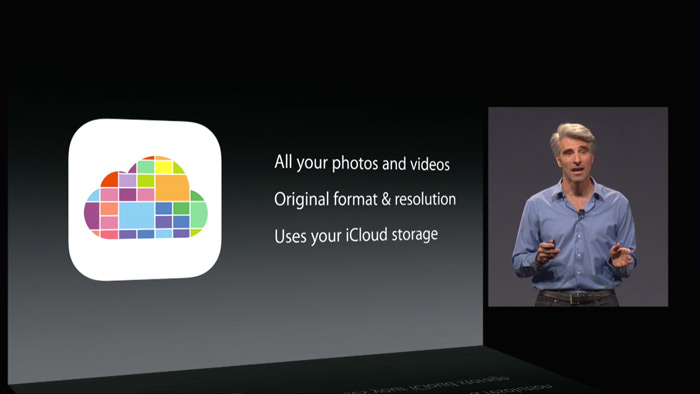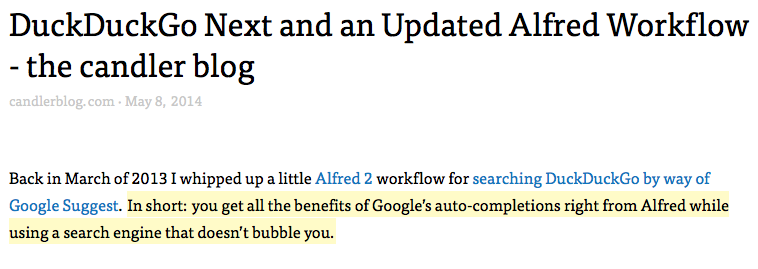Spitting Underwater

Spitting Underwater
I haven’t been publishing here (or anywhere) lately. The strange thing is that I’ve been writing plenty. It’s just that all of that writing is offline, usually by hand. I write and write until I lose steam and then second guess my ability to publish what I set out to compose in the first place.
I’ve started and stopped the “why I’m not publishing” piece countless times in the past year (or two). Trouble is: I don’t really have a great reason. My goto answer when friends ask me why the hell I don’t publish more often1 has been some speech on the futility of web publishing.
That’s part feint, part conviction. The web has gotten bigger and dumber since I started publishing regularly in 2006. Back then I was only spitting into the wind; now I’m spitting underwater.
The publishing landscape is just plain awful today. Sites game clicks out of crap and people fall for it. (Every. Damn. Time.) The better outlets still have to play along and add shitboxes, those little “Around the Web” paid click dinguses, below decent content, sending their readers out into the viral2 web to lose their minds over diet pill results or eleven celebrities you never knew were famous (or whatever).
We put up with it because it’s all we know. The battle was lost right at the beginning of the web, when publishers started selling ads against traffic. If only the forebears of the Internet knew back then what social would ultimately wreak. The humble click has been blown wide open by curiosity and outrage.
Of course, I’m culpable of all of the tricks that annoy the hell out of me. I’ve made mistakes on this journey of writing the web, but I’ve also done my part to call out the nonsense. I don’t have an answer to the crap web, but I know this: if I stop publishing then I’m doing nothing. And if I do nothing then the shitboxes win.
I’m not relaunching or redesigning the site. I’m not starting a new project. There is no new plan or editorial schedule. I don’t even know what the next post will be.
I just wanted to light a fire under my ass and confront my fear of publishing this piece.
So here I go again, spitting underwater.
Prestige TV in the Time of Climate Change ⇒
Sarah Miller in The New Yorker:
He indicated the raging river and the fleet of barges teeming with bedraggled humanity. “This is all terrible. I mean, where are they going to film ‘Girls’?”
Great short fiction (or prophecy). Calls to mind Gary Shteyngart’s excellent Super Sad True Love Story.
François Truffaut by Lillian Ross ⇒
New limited edition pocket-sized book from The Film Desk:
This volume of 40 pages contains five New Yorker Talk of the Town pieces by Lillian Ross, each of which follow François Truffaut during five visits to New York between 1960 and 1976, on occasions of the New York Film Critics Circle Awards and New York Film Festivals.
I went ahead to put in my order before I even finished Richard Brody’s post announcing it to the world. Can’t wait.
MetalTV ⇒
David Sparks on Apple’s recently announced “Metal” technology:
Maybe the push for Metal was more about the AppleTV than iOS.
Here’s how Apple describes Metal: “Built for developers who create highly immersive console games, Metal is a new technology that will allow them to squeeze maximum performance from the A7 chip.” The current AppleTV sports an A5 chip. Maybe the next iteration gets an A7 and Metal, then it could really fly.
In related news, the mobile game Threes is heading to the Xbox One soon, so I think there’s definitely room for iOS casual gaming to move to the living room.
Helluva Quote from Erik Spiekermann ⇒
Great reporting from Jason Fagone in New York Magazine on the dissolution of type juggernauts Jonnathan Hoefler and Tobias Frere-Jones. Halfway through the piece, though, type designer Erik Spiekermann, who is quoted earlier calling Frere-Jones “one of the two or three best type designers in the world,” steals the show with this tid-bit:
According to Spiekermann, who knows both Hoefler and Frere-Jones, Frere-Jones is “a cool kid” who “wants to make cool stuff,” whereas Hoefler is “the little nitty-gritty mean little bastard. He is a tight-ass, as we say in German.”
I tried doing a search for how to say “tight-ass” in German. Um…don’t do that.
BuzzFeed's Native Advertising Is Nothing But A Confidence Game ⇒
Copyranter, earning his title:
BuzzFeed’s native advertising is really—ultimately—terrible for brands. But it’s great for BuzzFeed. And this giddy circle jerk underway between media sites desperate for revenue and misguided advertisers desperate to feel instant gratification, continues.
Classic.
iCloud OS and Realizing the Connected Digital Hub

iCloud Yosemite
Yesterday, Apple announced OS X Yosemite and iOS 8, updates to the company’s two big operating systems. There is a lot to love in each respective update, but by far the most intriguing to me is how both systems are coming closer together server-side.
For a long time now, many have suggested that iOS and OS X will eventually become one operating system. The fear is that both would be hampered in the transition, with iOS dragged down by complexity and OS X stripped of all usefulness in the name of simplicity. Apple’s next move, though, shows the company’s commitment to letting each OS do what it does best while unifying both of them in invisible ways. Behind all of it is iCloud, the real OS at the heart of Apple’s future.
Apple’s history with cloud services has long been dubious. The company’s failures in this space get far more attention than what it gets right. iTunes Radio, for example, is viewed by many as a half-hearted attempt to take on bigger streaming services (one of which, Beats Music, Apple just bought). iTunes Match, however, is a pretty damn good example of using a cloud service to keep a library in sync across multiple machines. For $25 a year I get all of my iTunes library on all of my devices with metadata like play counts and star ratings kept in sync. There is a disconnect here, though, because having a pile of files taking up space on your machine is so five years ago. Still, iTunes Match seems to me an excellent execution of keeping digital media in sync.
Which brings us to where Apple is taking iCloud in the OS updates coming later this year. The biggest headline is iCloud Drive. In short, iCloud Drive is a Dropbox-like folder with app-specific folders for sandboxed media. Previously, iOS apps could sync documents over to the Mac only if they had a corresponding Mac app. Those documents would only be accessible by the one app on both platforms (though there were workarounds for this). Now, all documents in iCloud can be accessed through the new document picker on Mac and iOS, so you can (finally) start a document in one app on iOS and finish it in another on your Mac without having to make a copy of it.
What’s more interesting to me is the new iCloud Photo Library. What iTunes Match is to your music, iCloud Photo Library is, at least in concept, to your photos. Photos will no longer (all) be stored on the phone, they will be accessible via iCloud, so you can look years into the past at your photos and download them as needed.
There’s even a new Mac Photos app that will ship “early next year.” It is essentially a Mac version of the iOS Photos app that hooks into the iCloud Photo Library. Credit where it’s due, John Gruber nailed this in his WWDC 2014 Prelude over the weekend:
To that end, here’s what I’d like to see: a ground up rewrite of iPhoto, designed as a client for an iCloud-centric photo library.

iCould Photo Library
When presenting the new iCloud integration with Photos, Craig Federighi put a slide up that said the following:
All your photos and videos
Original format & resolution
Uses your iCloud storage
That’s huge. No, literally, that’s, like, way too huge. Original format and resolution? Video too? iCloud pricing is changing to accommodate massive photo libraries. Your first 5 GB (a pittance, really) continues to be free, but under the new pricing 20 GB of iCloud storage will be just $0.99 per month, and 200 GB will be $3.99 per month. Currently iCloud storage is billed annually, with an additional 20 GB going for $40 per year, 50 GB fetches $100 per year.
The new pricing isn’t nothing, but it’s a helluva lot cheaper than the competition. Dropbox charges $19.99 a month or $199 for the year for the same 200 GB. Apple’s bill clocks in at $47.88 a year, a quarter the cost of Dropbox.
With iTunes Match, Apple proved adept at keeping metadata in sync to manipulate media in multiple locations. Extending that to photos and videos could prove monumental to the creative process. Keep everything in sync, editable from anywhere.
I imagine that Photos for Mac will replace iPhoto and probably Aperture as well. If it can seamlessly import my Aperture library with edits and versions, then I can’t wait to get on board. Photo Stream has been the main reason I’ve stuck with Aperture all of these years, but it’s clunky and hard to manage. The idea of keeping the photos from my Nikon and the photos from my iPhone in sync in one beautiful, organized (and I hope fast) library is something I can get behind.
Not too long ago OS X updates cost $129. That price dropped like a rock until the updates became free. iOS updates have always been free so long as you own a supported device. It should be clear now, though, that the real OS Apple wants to sell you is iCloud. On their own, the free OS X Yosemite and iOS 8 offer an incredible value to consumers with a variety of improvements. But their true power is unleashed with iCloud storage.
Yesterday Apple only announced pricing for their 20 GB and 200 GB plans, but they did say they will offer up to 1 TB in iCloud storage. I could see myself inching toward 1 TB (my photo library, at present, hovers around 300 GB) over the next few years in an effort to free up space on my iPhone and iPad without sacrificing great old memories.
Back in January of 2012, shortly after the introduction of iCloud, Tim Cook said the following on an Apple earnings call: “iCloud is more than a product, it’s a strategy for the next decade.” That strategy is coming into focus. iCloud is now more than just the glue between OSes; it’s an OS unto itself. This should have been clear long ago. In his last keynote, in introducing iCloud, Steve Jobs described it thusly:
We’re going to demote the PC and the Mac to just be a device, just like an iPhone, an iPad or iPod Touch, and we’re going to move the digital hub, the center of your digital life, into the cloud.
The “digital hub” insight is what drove Apple’s success in the last decade. The plan was always to have iCloud drive success in the coming decade, but it’s only becoming clear now as they build it out.
So I’m excited for the iCloud OS, Apple’s next big thing we didn’t even realize was a thing.
Journalism is Crap Because Facebook, Says Vox

Facebook all up in Vox
Let’s start with Matthew Yglesias’s first, illustrative mistake. In a defensive, reactionary piece over at Vox, “Facebook product director furious at Facebook’s effect on news,” the writer and in-house Red Mage sets up a response to a Facebook post by Mike Hudack by describing him, “importantly,” as “Director of Product at Facebook.” Yglesias includes a link to Hudack’s LinkedIn profile which, sure as shit, says “Director of Product at Facebook” right up top.
Something sounded off about that title to me, so I took the extra five seconds to figure out who the hell Hudack is. Some 500px south of Hudack’s name on LinkedIn, his current position is listed as “Director of Product Management” for Facebook. His personal website lists his current position as “Director of Product Management for Ads and Pages at Facebook,” which, I think it’s fair to say, sounds like an actual job I can wrap my head around. It also makes more sense to me that someone with such localized interest at Facebook would feel free to lob bombs at the media: a director of all product can’t afford to be so cavalier.
The point is that Yglesias (whose LinkedIn profile lists him as Associate Editor at The Atlantic Monthly, an outlet he hasn’t published at in almost three years) misleads readers right up front out of a glaring disregard for getting the simple facts right. And he does so in a piece about how Facebook is ruining the news.
With that out of the way, what did Hudack say? And how did Yglesias respond?
Hudack’s self-described rant takes much of the media (print, web and television) to task for just reporting “what people tell them, whether it’s Cheney pulling Judith Miller’s strings or Snowden through the proxy of Glenn Greenwald doing roughly the same.” It’s not exactly quotable, but it’s well worth the read. It cuts to the heart, if ham-handedly, of how shitty the media landscape appears to an outside observer.
His final three paragraphs are dedicated to tearing Vox apart.
Personally I hoped that we would find a new home for serious journalism in a format that felt Internet-native and natural to people who grew up interacting with screens instead of just watching them from couches with bags of popcorn and a beer to keep their hands busy.
And instead they write stupid stories about how you should wash your jeans instead of freezing them.
No wonder Yglesias had to respond. Vox has to defend itself. Personally, I think Editor-in-Chief Ezra Klein should really have crafted the site’s response since Hudack calls him out by name, but I’ll just assume Yglesias is speaking for the site and its EIC in the only formal acknowledgment of being called stupid.
Yglesias gets right into it:
…it is not hard to tell who is to blame for the fact that the jeans story (which is a great, interesting, informative story) got more readers than Andrew Prokop’s excellent feature on the DATA Act. Facebook is to blame.
Go on…
…for better or for worse, traffic on the internet right now is all about Facebook sharing behavior.
Ah. Now we have arrived at the disconnect. Traffic on the Internet is about Facebook sharing behavior. In order to get into the headspace of Yglesias and be able to blame Facebook for the proliferation of bunk content, you have to first accept that getting traffic is the point of journalism.
Here’s where Hudack (and me) and Yglesias part ways. Hudack wants journalism, Yglesias wants clicks.
Naturally, this runs into bigger questions of monetization, advertising, journalist pay, etc., etc. One thing that has become abundantly clear to me over the past two years is that the click economy is untenable. Getting attention on the web has proven to be eminently game-able. Great journalism still can’t be gamed, it can’t be faked.
Blaming Facebook for the state of journalism is a child’s argument. It misses the point of the bigger issues at hand: that chasing ratings or clicks or subscribers is deleterious to great writing. But it’s easier to hate the player than the game.
Anyway, why do women fake orgasms? Go to the Vox, the future of news, to find out.
DuckDuckGo Next and an Updated Alfred Workflow
Back in March of 2013 I whipped up a little Alfred 2 workflow for searching DuckDuckGo by way of Google Suggest. In short: you get all the benefits of Google’s auto-completions right from Alfred while using a search engine that doesn’t bubble you.
As noted by Chris Herbert at MacStories, the folks at DuckDuckGo recently launched DuckDuckGo Next, a beta of a massive overhaul of both the design and functionality of the upstart search engine. I really love the way DDG Next looks and works. They’ve done an amazing job of offering context-specific results without obscuring more general ones.
For example, searching for “chicken recipes” on both DuckDuckGo Next and Google brings up two very different pages.

DuckDuckGo Next vs. Google
In a browser window that was originally 935 x 1013 px, DuckDuckGo offers nine results and a single ad. Four of those nine are to specific recipes, accompanied by a photo and a brief ingredient list. Even better, the recipes up top can scroll horizontally, where a total of thirty-five recipes can be seen without leaving the page. In the same size window, Google returns six ads and six results, two of which are filed under “News for chicken recipes.” In this instance, one of these search engines is an order of magnitude more helpful than the other.
The first I heard about DuckDuckGo Next was actually in the comments section of my Alfred workflow. It turns out there are quite a few regular users of the workflow. A few started asking for an update that pointed to DuckDuckGo Next. I whipped one up, available for download now.
The workflow still relies on Google Suggest for autocomplete. If and when I can figure out how to switch that over to DuckDuckGo’s new autocomplete I will make the change. Until then, enjoy searching the lovely DuckDuckGo Next from the comfort of Alfred.
Instapaper Highlighting

Instapaper Highlighting in Action
You would have no way of knowing this, but I’ve been trying to write more about movies around here. That means reading more about movies too. Which in turn means my usual screwing around with apps and workflows and things…
I’ve been trying to write a piece that involves pulling together the disparate strands of a number of things other folks have written in the past little while. No foolin’: earlier this week I spent an hour or two trying to find a quick and easy way to organize highlights from my Instapaper account. I cobbled together a number of tools and gave up, assuming it was hopeless.
Then today Instapaper pushed out a huge update to their apps and web backend, including integrating highlighting. What luck!
Highlights do just what they say on the tin and then some. Select text in an article, click highlight, and voila, the text turns into a different color. Highlights also get their own section in Instapaper, allowing you to quickly see all the highlighted text across folders in one view. Plus you can set Instapaper to automatically trigger an action when you highlight text. More on that in a moment.
Before I go any further I should mention a point that has already kicked up some dust in the Instapaper Blog comments. In order to get unlimited highlights across Instapaper, you need to have a subscription. Otherwise, you get 5 free highlights per month.
Instapaper subscriptions have long been a confusing point of contention for some users who think an app that costs money shouldn’t have additional costs. According to Instapaper’s FAQ, for $1 a month (really $3 every 3 months) you get:
- Full-text search
- Unlimited highlighting
- Third-party API access
- Better Kindle functionality
- Ads removed from website
That third-party API access is key for me since I love using ReadKit to organize articles. Honestly, now with highlighting, an Instapaper subscription is a steal at twice the price. But it’s an important point: without a subscription you’ll want to use highlighting sparingly.
Back to highlighting tricks.
Highlights to Evernote
Any sharing account you have set up in Instapaper (like Twitter, Evernote or Pinboard) can automatically share out a highlight in the background. So if you’ve set up Evernote to “Post Highlights” every time you highlight text, a new note will be created in your default notebook with the article title as the note title and the highlighted text and url as the note content.
Here’s a tip: save a search in Evernote for author:no-reply@instapaper.com. This will filter out only notes emailed to Evernote from Instapaper, which in my case will only be highlights.
Highlights to Pinboard
Right now I have everything I save to Instapaper going to Pinboard as a sort of firehose backup of all my links. Now that highlighting adds the ability to post to Pinboard, with the highlighted text going into the description field, I’m thinking of changing that setup. This way only articles I have enough of an interest in to highlight some text will make their way to Pinboard. Even better: highlighting text is much, much faster than using Instapaper’s sharing panel to send articles to Pinboard.
I’ve long used Instapaper and Pinboard alongside one another, but that relationship has become fraught over time. Ideally Instapaper is my “hot” storage while Pinboard is my “cold,” or deep, storage. However, more or less the Instapaper links clutter up Pinboard. Highlighting with background sharing, I hope, should help the bring out the best of both services. I’ll give it a go and report back.
Other Goodies
I also really like that the article view includes a small, conspicuous flag letting you know if an article has highlights and how many it has. In daily use this may not seem important, but when I’m doing deep research on a topic in folders, this could be a huge boon.

Instapaper Highlighting Flag
All this gushing about highlighting and I haven’t even mentioned the major redesign of the web app (pictured in screenshots above) with drag and drop organization, plus subtle but important tweaks to the iOS apps. And they’ve even got a brand new logo from Kris Sowersby, the typographer behing my preferred monospaced font, Pitch.
Though the rest of these features play second fiddle to highlighting today, I’m interested to see how they change the way I think about Instapaper. For so long it has been an app for reading content. Today’s updates prove that it’s no slouch when it comes to organizing content. Mostly, though, I’m excited to see how ambitious all of these updates are. It’s nice to know there are people working, iterating and making a service and app you love better.
Anyway, I’ve got to get back to marking up all of these articles in Instapaper so I can get back to writing about movies.